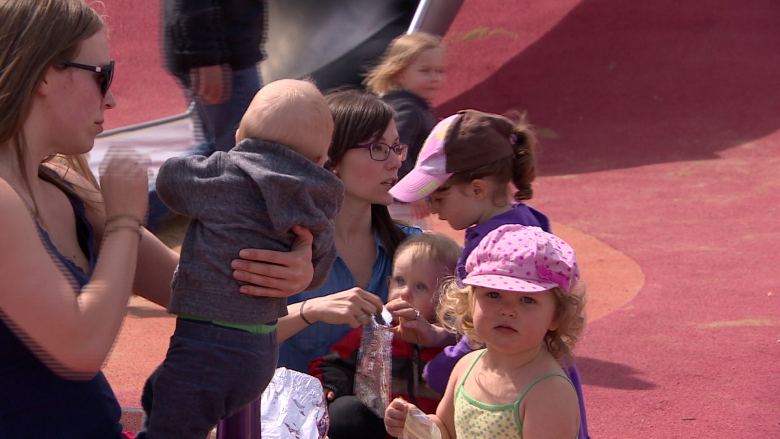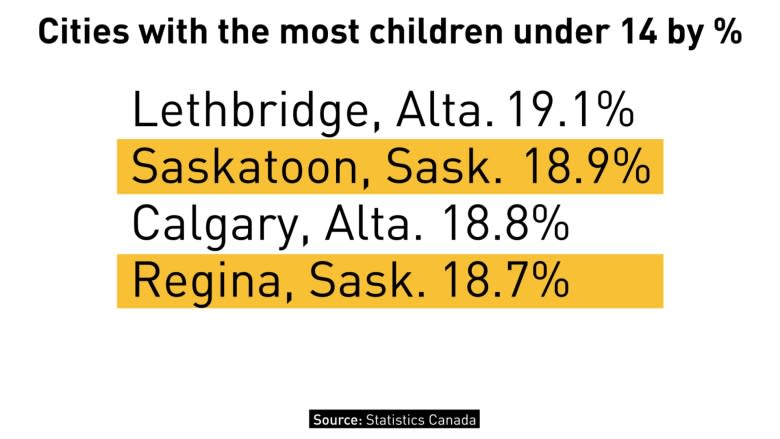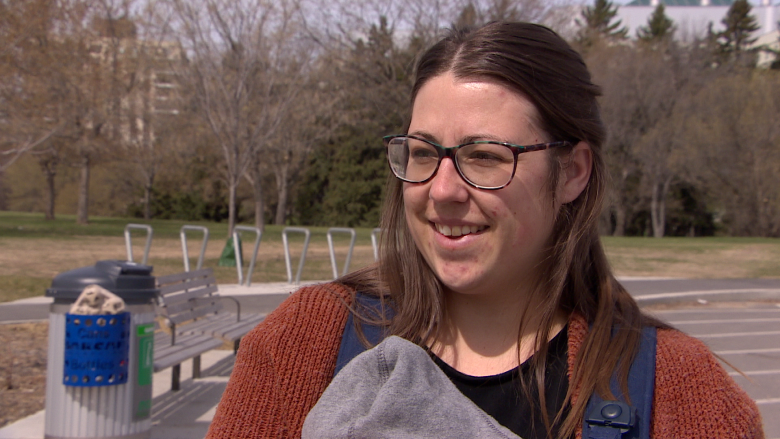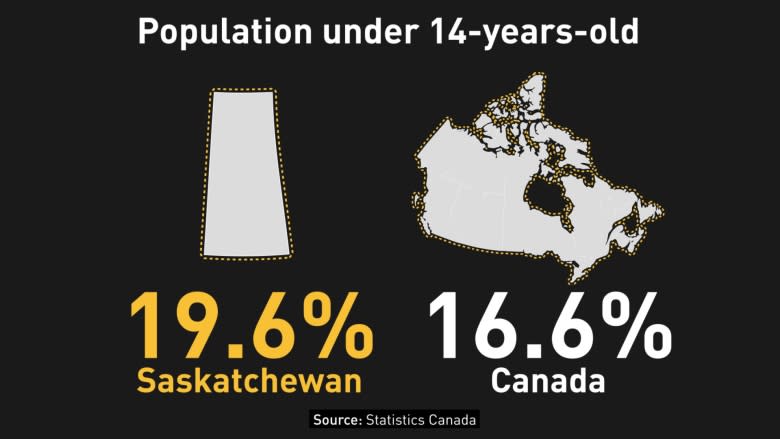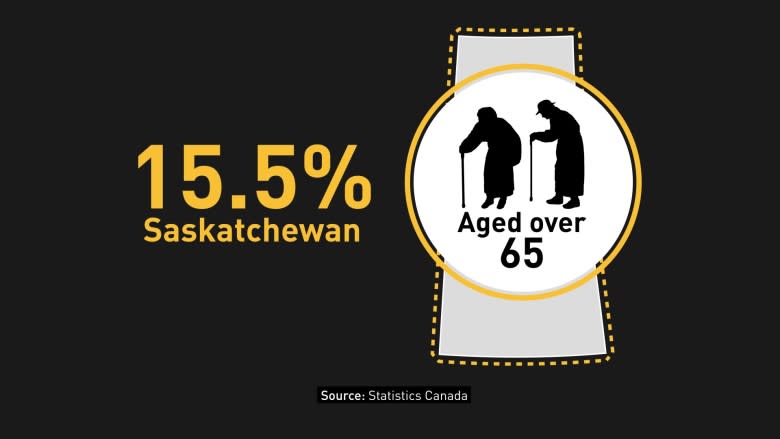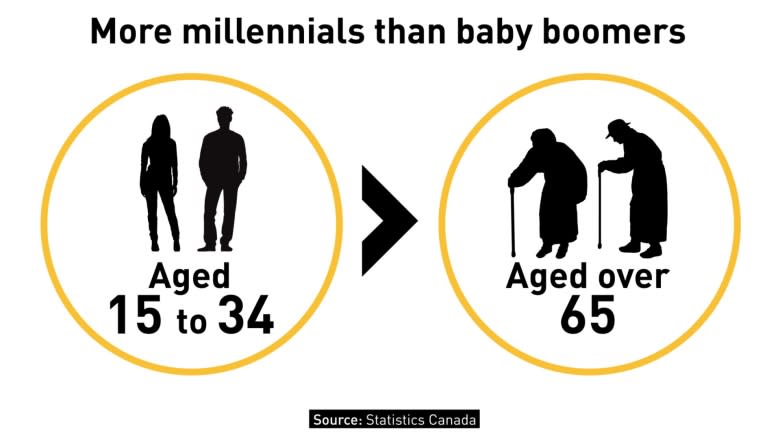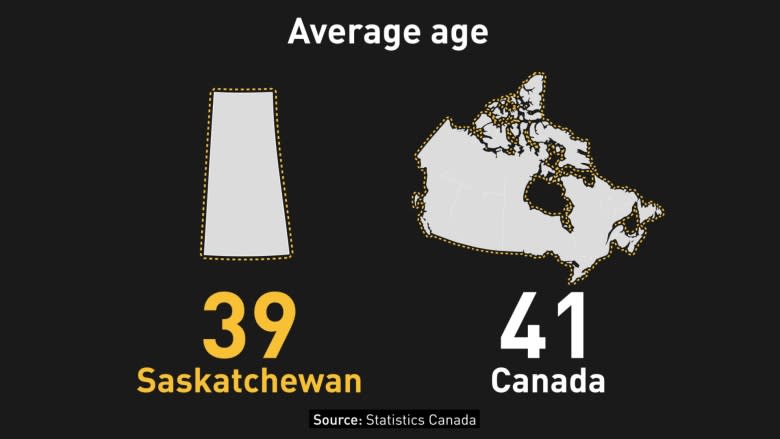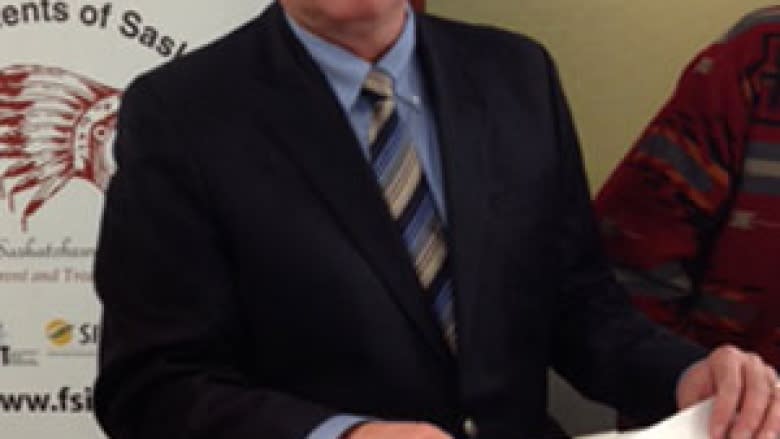More babies than seniors in Saskatchewan: census
Even as the rest of country's population ages, Saskatchewan is staying young.
New census data released by Statistics Canada shows Saskatchewan has a higher percentage of children under the age of 14 than anywhere else in the country.
That doesn't surprise Randi Falk.
Falk was one nearly a dozen parents out at Kinsmen Park in Saskatoon Wednesday.
The mother of two young kids — one two-years-old and the other two months — says there are children everywhere in her life.
"It doesn't surprise me," she said. "There are like eight families that we spend time with — there are 20 kids between us that are under seven."
The data showed 19.6 per cent of the province was 14 years of age and younger last year — the highest percentage of all the provinces.
Nunavut has the youngest average age in Canada overall.
There are fewer seniors here as well.
People aged 65 years or older made up 15.5 per cent of the population, one of the lowest rates in the country.
Saskatchewan's baby boomers are also being outpaced by their millennial counterparts.
According to the census, millennials make up 26.6 per cent of Saskatchewan's population, a rate matched by Manitoba
Alberta is the only province with a higher percentage.
Saskatchewan also had one of the lowest average ages in the country at 39. The national average sat at 41.
Meanwhile, Saskatoon and Regina were two of the youngest cities in the country. Only Edmonton and Calgary had fewer people over 65.
Aboriginal population driving boom: expert
One University of Saskatchewan professor said Saskatchewan is ill-prepared for this monumental demographic shift.
Economist Eric Howe said the younger population is largely because of the growing number of Aboriginal people in Saskatchewan.
"Saskatchewan's non-Aboriginal population largely reflects the demographics of the rest of the country. It is disproportionately older, so people like me are disproportionately older. And its Aboriginal population, on the other hand, is disproportionately younger," Howe said.
Howe said other data taken in context with the new age numbers show that Aboriginal people make a large demographic of younger people who have not yet reached childbearing age.
Once they do, he said Saskatchewan's population could be majority Aboriginal. That "big shift" could happen within decades and it's something that politicians and policy makers here need to reckon with.
"The big shift has to be accommodated by increasing the education credentials for Aboriginal populations and further moving the Aboriginal people in this province into the economic mainstream," Howe said.
That involves everything from properly funding and investing in on-reserve education and closing the gaps between Aboriginal and non-Aboriginal students and employees, Howe said.
More precise data on Aboriginal Canadians will be available this fall when the third portion of the census is released.

